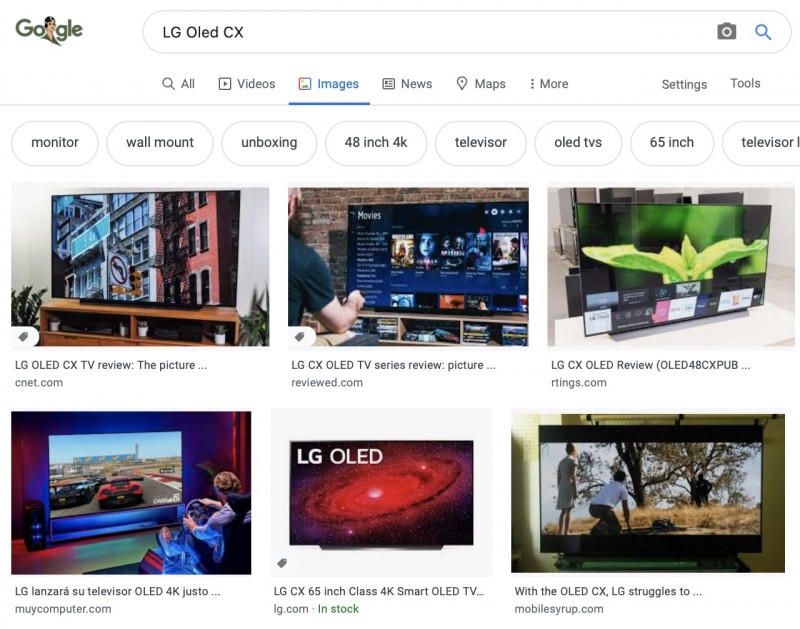It’s virtually impossible to say “SEO” without thinking “Google.” Google has always been THE search engine to figure out in the world of internet marketing. If you can utilize the free tools they offer, your SEO campaign will be dramatically better than a campaign that does not.
Recently, Google’s been making some big announcements. First was the announcement of Google+, Google’s counter to the social media behemoth Facebook. Along with the announcement of Google+, Google has been making some massive changes to their entire internet foundation.
This means new interfaces for their most popular websites (such as Gmail) and a wealth of new features for searchers.
Unless you’ve been following Google updates constantly, you may have missed the announcement of the new image search feature. Before the update, Google’s image search was fairly basic. You could type in a series of keywords (just like ordinary search) and it would come up with relevant images based on your search query.
With the new image search, you can upload images and search based off of those images. This is a massive new update that’s poised to greatly increase the amount of value we get from Google Image Search.
Although the feature is useful for ordinary people trying to find something, it has a huge amount of potential for internet marketers. In today’s article, I’ll be discussing a few new SEO techniques you can use thanks to Google’s new image search.
Using Google Image Search to Build Connections and Relationships

When starting a new website, one of the first steps is to become connected within your industry or niche. This means subscribing to popular blogs, posting comments, sharing content on Facebook, etc. If you help out other webmasters and blog owners, they’ll be much more likely to help you out with your own website.
With the Google Image Search, this process has become both easier and more reliable.
Running a popular blog isn’t easy. You need to build a personal brand. This means the most popular bloggers often have a picture they use for everything. They have the same picture on their Facebook profiles, Twitter… any social network they’re involved in.
Once you find a popular blog or website in your niche, it’s extremely likely the blog has one consistent picture for everything associated with it. Once you’ve found that picture, you can plug it into Google’s new image search.
After you click “search,” Google will search through its massive library of websites and display all results with that picture. For example, if the blog owner runs a blog on organic food, you would likely see a large number of results on organic food. However, you might also find other interesting bits of information you didn’t know before. Maybe that blog owner is interested in personal development as well. Maybe they’re interested in health and fitness.
With the new image search, you can find ALL websites associated with that picture, helping you know exactly what a particular person is into. At this point, making a connection is a simple matter of giving them value in one of the areas they are interested in.
Using Google Image Search to Keep Your Website Safe
With recent Google algorithm updates, one thing has become crystal clear: if you associate (link) yourself to websites that use grey/blackhat techniques, you dramatically increase your risk of getting penalized by Google. Thanks to the new image search function, you can determine whether or not the people you’re linking to are involved with this sort of behavior.
It doesn’t always work, but it’s a good idea to perform this search on anyone who you’re linking to or who links to you.
When visiting social profiles of bloggers and website owners in your niche, check who’s interacting with them. In many cases, people create fake profiles in order to gain a large number of friends or followers quickly. If you identify anything suspicious going on with someone you’re connected to via links, such as a profile that seems out of place, you can easily search the image in Google and see what the results are.
If it’s a fake profile, you’ll find many different profiles with the same picture but different names. Although linking to a blog that uses grey hat social techniques doesn’t necessarily affect your Google rankings, it can mean they’re also using these types of techniques in SEO. This is where you can run into trouble.
What’s Google’s Next Feature?
Although this is just the tip of the iceberg, the new image search brings a wealth of new SEO possibilities to the table. Where will Google go next?
Well, we can’t know for sure at this point. However, you can know that as soon as we do, we’ll let you know! If you want to know about information or updates the second they happen, fill out the form to be added to our exclusive SEO e-mail newsletter! No spam, just information, and updates on everything SEO.
If You Liked This Article You Might Also Like:
Outsourcing SEO With the Panda Update in Mind
The Taming of the Internet: What's Happening, Why it's Happened Before and What You Can Do About it
